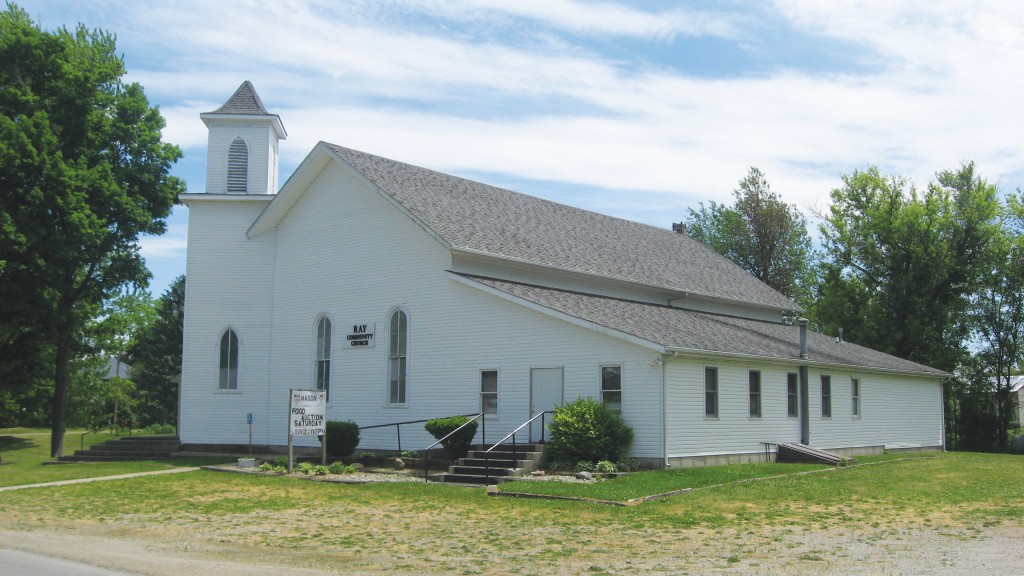You have free articles remaining this month.
Subscribe to the RP Witness for full access to new articles and the complete archives.
For the past few decades, Indiana has been one of the RPCNA’s strongest regions, but nearly all the Indiana congregations have been founded in living memory. Several older congregations once existed in the state, although all but one disappeared over the years. This month, we take a look at Indiana’s 19th-Century RPCNA congregations.
Beginning in 1805, RP settlers from South Carolina moved to Indiana Territory to flee slavery. Settled in what is now western Fayette County, between Connersville and Rushville, they formed the Garrison society—named for a nearby creek—of the Beech Woods congregation in far western Ohio. As the society grew stronger, they were separately organized in 1812. There were few RPCNA ministers then, so they had to wait until 1816 to obtain a pastor, John Kell. What’s more, they had to share his ministry with Beech Woods: after preaching at Beech Woods, he would travel 35 miles west to Garrison, preach there the next week, then travel back.
After his 1819 resignation, they were vacant until 1832, when Rev. Ebenezer Cooper of Tennessee brought most of his congregation north. Cooper and many members adhered to the “New Light” side of the denomination, which formed a separate denomination in 1833, and the remaining Garrison members had to depend on supply preachers sent by the Lakes Presbytery. The cause revived after Rev. Josiah Dodds came in 1847, but members started moving away, and the congregation closed in 1885. Today, nothing remains except their cemetery, which was later used by Quakers.
While some RPs settled at Garrison, others migrated to Princeton, north of Evansville. They were organized in 1817, and John Kell went there after resigning from Garrison. Like Cooper, Kell joined the New Lights, and a minority of members seceded to stay within the RPCNA. They gradually regained their strength and prospered under the pastorate of John Stott before and during the Civil War. Stott was falsely accused of a crime in 1868, and, although Indiana courts exonerated him, Synod suspended him. He and most of the members formed an independent church, and again a minority seceded to stay with the RPCNA. Membership gradually regrew, but it fell during the Great Depression, and the congregation closed during World War II. The site of their last church building, three blocks east of the courthouse, is now an empty lot.
The Walnut Ridge congregation, founded in 1820, met in the hills of Washington County, north of Salem. It, too, was formed by Tennessee and South Carolina emigrants, and John Kell was one of the first traveling ministers to visit. Its only long-term pastor was Robert Lusk, a contentious figure. He was suspended for fraud in 1825, a few months after his arrival; and, after being exonerated by an 1835 investigation, he led away much of the congregation in 1840. He was not New Light but Steelite, a group similar to the Safety League recently discussed in this column (Jan. issue). A few members remained, and J. J. McClurkin was a part-time pastor in the 1840s; but the members gradually emigrated or died, and the congregation disorganized in 1862. The old cemetery still remains.
More Southerners chose to settle in the growing town of Bloomington and were organized in 1821. Its early history resembles the other Southern settlements, but it survived splits and remains a vibrant congregation today. A recent Witness issue featured a picture from Bloomington’s bi-centenary celebration.
Members moving west from the northern states formed three congregations in central and northern Indiana: Cedar Lake, Lake Eliza, and First Indianapolis. The Cedar Lake congregation was founded in 1841 at Ray in Steuben County, on the Michigan line. Many members lived in Michigan, and its final building (now occupied by an independent church) has a “State Line Road” address. Rev. John French served his entire 30-year ministry there, 1850–1880, but after his death pastors served shorter terms—one even left the denomination—and the congregation closed in 1927.
The Lake Eliza congregation sat in northern Porter County and existed from 1852 to 1886. Two ministers served long periods there (P. H. Wylie, 1855–1860, and R. M. C. Thompson, 1865–1881), but the congregation was always small, and eventually most members moved away. Today, this area is transitioning from agriculture to Chicago suburbia.
Finally, just after the Civil War, a number of members from across the church were attracted to Indianapolis. Pastored by John Crozier, they organized in 1866 and built a church building southwest of downtown. Unfortunately, many of them soon moved away, and the congregation closed in 1870.
From 1943 until 1964, Bloomington was the only RPCNA congregation in Indiana. What a trans-formation God has made in the last 60 years! What will God do in and through the RPCNA in Indiana between now and 2082?
